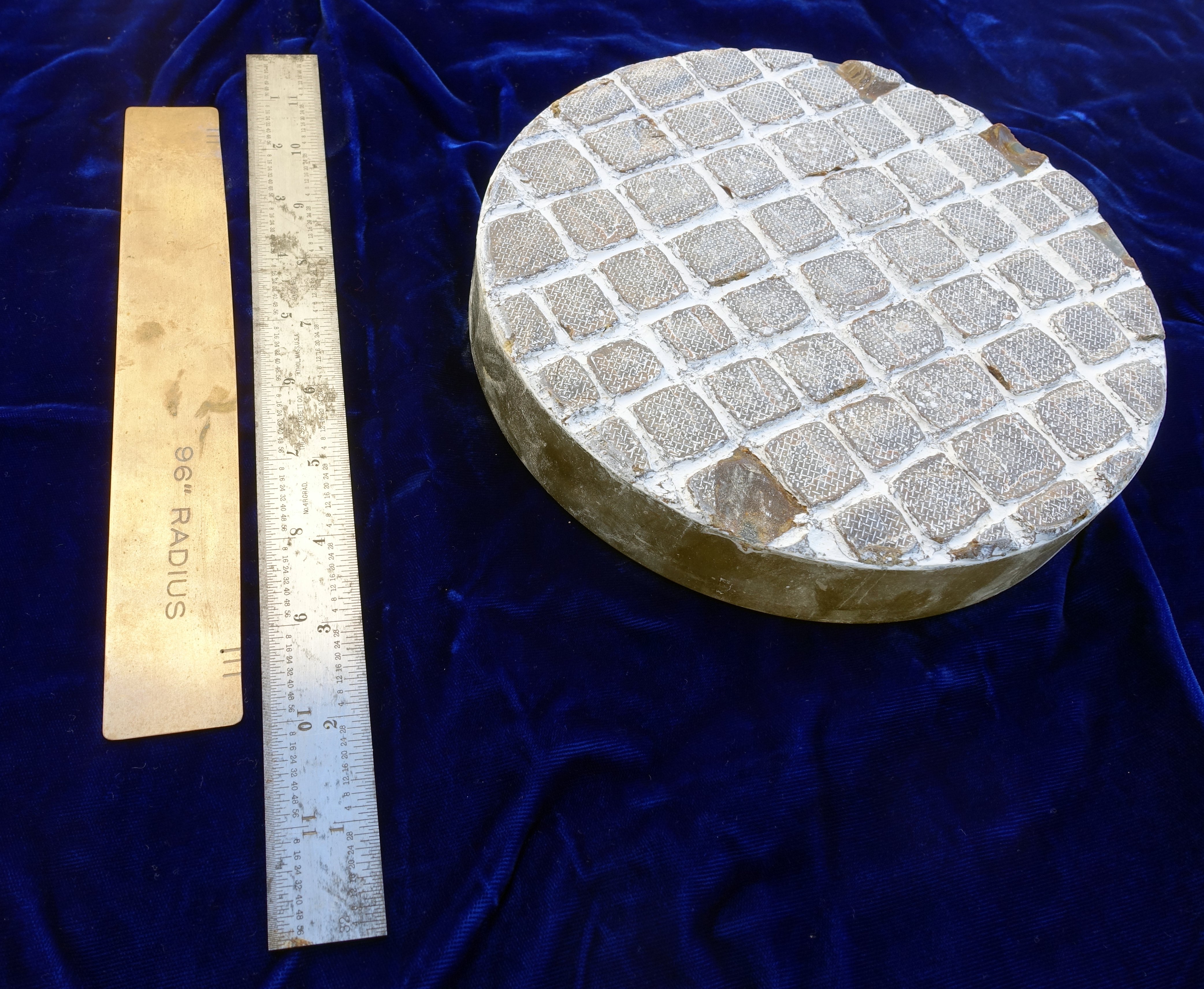8" Dobsonian telescope
My roommate Adam told me about a telescope he had started to make. The most interesting part was that he was grinding the mirror himself. Using mainly sand, elbow grease and a clever test setup, it is possible for anyone to fashion a mirror accurate to a fraction of a wavelength of light. This was irresistible to me.
The book he recommended and which I used as my main reference was Texereau's classic How to Make a Telescope.
After building the wood stand described in the book, over the course of many days, I used finer and finer grit to shape two discs of glass into complementary spherical sections - one convex and one concave. For final polishing and conversion of the glass shape from a spherical to parabolic section, I added a layer of pitch to the convex tool and built a Foucault tester.
The tester is remarkable - it is a simple device whose primary components are an LED and a razor blade. Yet it makes it possible to see inaccuracies on the surface of the glass which are a fraction of a wavelength of light. If a finger is briefly placed on the mirror, it is easy to see where it was due to the local expansion of the slightly heated area.
I was able to grind and polish my mirror to an accuracy of λ/10. Then I machined all the parts for the mirror mount, secondary spider and focuser, had the tube powder coated and had the aluminum parts anodized.
It is thrilling to see Saturn's rings, Jupiter's features and beautiful views of the moon, but I was much more interested in building a telescope than I am in astronomy.









